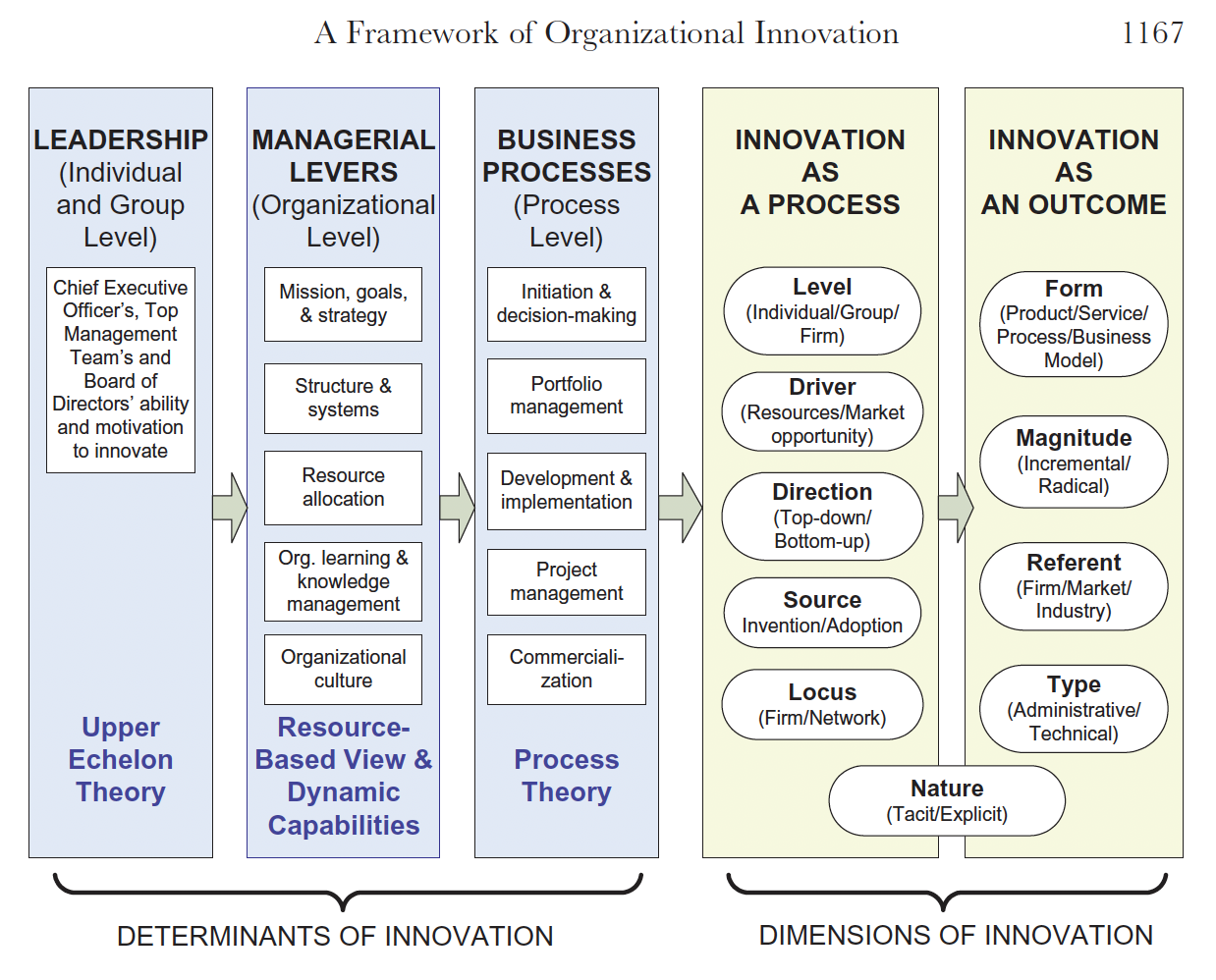Blog
The Innovation Manager: Architect of Organizational Change
Interlaken4Management Series - by: Álvaro Márquez Cadavid, Senior Management Consultant, Interlaken® Solutions

As I progress in my research project for my Master's in Innovation Management, I encountered the work of Crossan and Apaydin (2010), which I found fundamental for understanding the complexities of leadership in innovation. Through their multidimensional framework, these authors invite us to analyze innovation as a phenomenon that encompasses both structural and behavioral dimensions, recognizing the interdependence between processes, leadership, and outcomes.
In the previous article, we explored how a manager's focus or distraction directly impacts organizational effectiveness and performance. A Focused Manager ensures strategic alignment and resource optimization, while a Distracted Manager can divert valuable efforts and undermine team achievements. Now, we take a step further in this reflection to understand a key managerial profile for long-term success: the Innovation Manager.
In an ever-changing business environment, the role of the Innovation Manager emerges as a crucial figure for ensuring organizations' adaptability and competitiveness. Unlike other leadership styles, the Innovation Manager not only manages daily routines but also fosters a culture where creativity and positive disruption are essential ingredients for success. However, their function extends beyond idea generation. Their true challenge lies in translating those ideas into tangible results that enhance organizational value.
It is important to clarify that an Innovative Manager is not the same as an Innovation Manager; we are not necessarily referring to a position or title but rather to the skill set that every leader must possess today in a volatile, uncertain, complex, and ambiguous world. Both roles can coexist, but here we will focus on the latter.
Organizational Innovation: A Multidimensional Approach
The framework proposed by Crossan and Apaydin (2010) suggests that innovation should be understood as a process operating at three levels: leadership, organizational processes, and outcomes. For an Innovation Manager to be effective, they must operate across these three domains, mobilizing the necessary resources to foster an innovative culture, orchestrate value-creation processes, and ultimately ensure that these efforts translate into measurable results.
- Innovative Leadership: The Innovation Manager must lead with strategic vision, creating an environment where teams feel empowered to experiment and take calculated risks. However, this requires more than merely encouraging creativity. Innovative leadership involves managing ambiguity and aligning the organization around a common vision that connects innovative efforts with long-term strategic objectives.
- Innovation Processes: As Crossan and Apaydin point out, organizational processes supporting innovation must be well-structured yet flexible. The Innovation Manager plays a critical role in identifying and optimizing these processes, ensuring that the organization not only generates ideas but also implements them effectively. Here, the focus should be on integrating practices that facilitate cross-departmental collaboration, continuous learning, and experimentation within a risk management framework.
- Innovative Outcomes: Finally, the success of innovation must be measured through its outcomes. The Innovation Manager cannot settle for merely fostering ideas; their true value manifests when these ideas translate into quantifiable benefits—whether through new products, process improvements, or sustainable competitive advantages. Here, Crossan and Apaydin's framework emphasizes the importance of linking innovative outcomes with key performance indicators to ensure that innovation effectively contributes to overall success.

The Challenge of the Innovation Manager
According to Crossan and Apaydin, the Innovation Manager faces several critical challenges. First, they must navigate the tension between exploration and exploitation. While exploration involves seeking new opportunities, exploitation refers to efficiently leveraging existing capabilities. Maintaining this delicate balance is essential to avoid neglecting current operations in favor of innovation that has yet to generate tangible value.Moreover, the Innovation Manager must manage resistance to change from both upper management and operational levels. To do this effectively, it is crucial for this leader to combine technical skills with a deep understanding of organizational psychology and change management. Only through an inclusive and participatory approach can they overcome the inertia that often accompanies innovative efforts.
Conclusion
Just as the Focused Manager is essential for maximizing organizational performance, the Innovation Manager enables organizations to project themselves into the future by opening new opportunities and ensuring their relevance in dynamic markets. Each of these profiles adds a unique dimension to an organization's ability to adapt and thrive. By adopting a multidimensional perspective like that proposed by Crossan and Apaydin (2010), organizations can ensure their innovative efforts are integrated, aligned, and oriented toward creating real value.The success of the Innovation Manager is thus measured not only by the number of new ideas generated but by their ability to lead with focus, implement rigorously, and deliver impactful results.
This text was drafted with assistance from Artificial Intelligence and supported by the following bibliographic sources:
- Crossan, M. M., & Apaydin, M. (2010). A multi-dimensional framework of organizational innovation: A systematic review of the literature. Journal of Management Studies, 47(6), 1154-1191.

